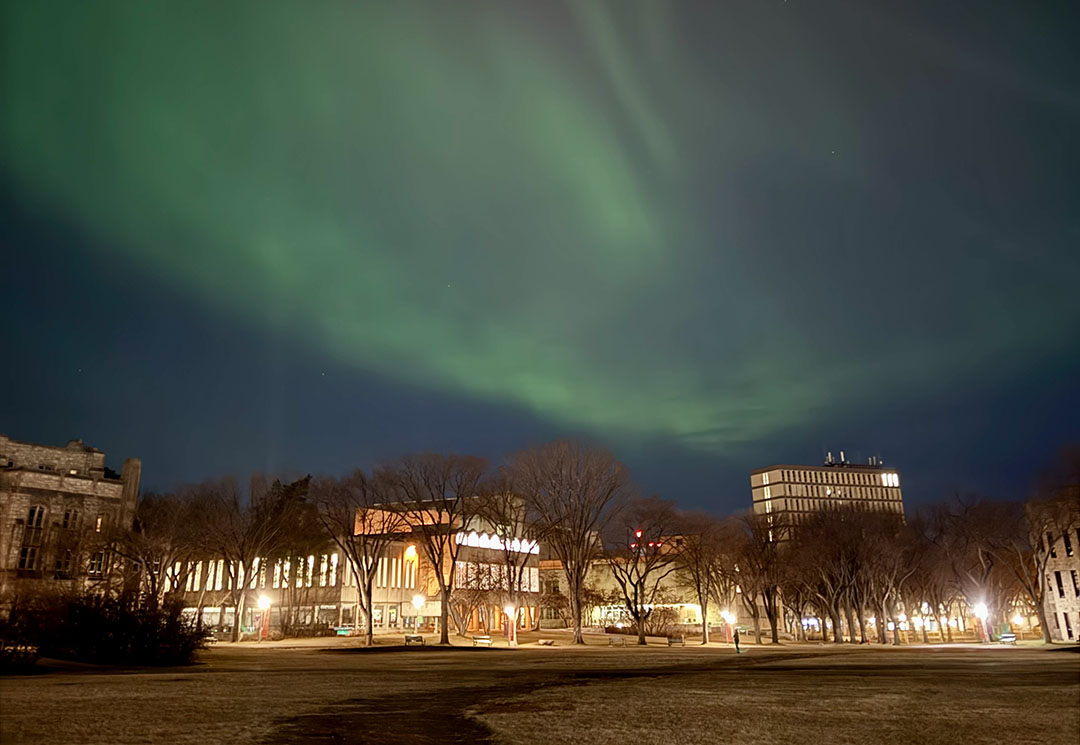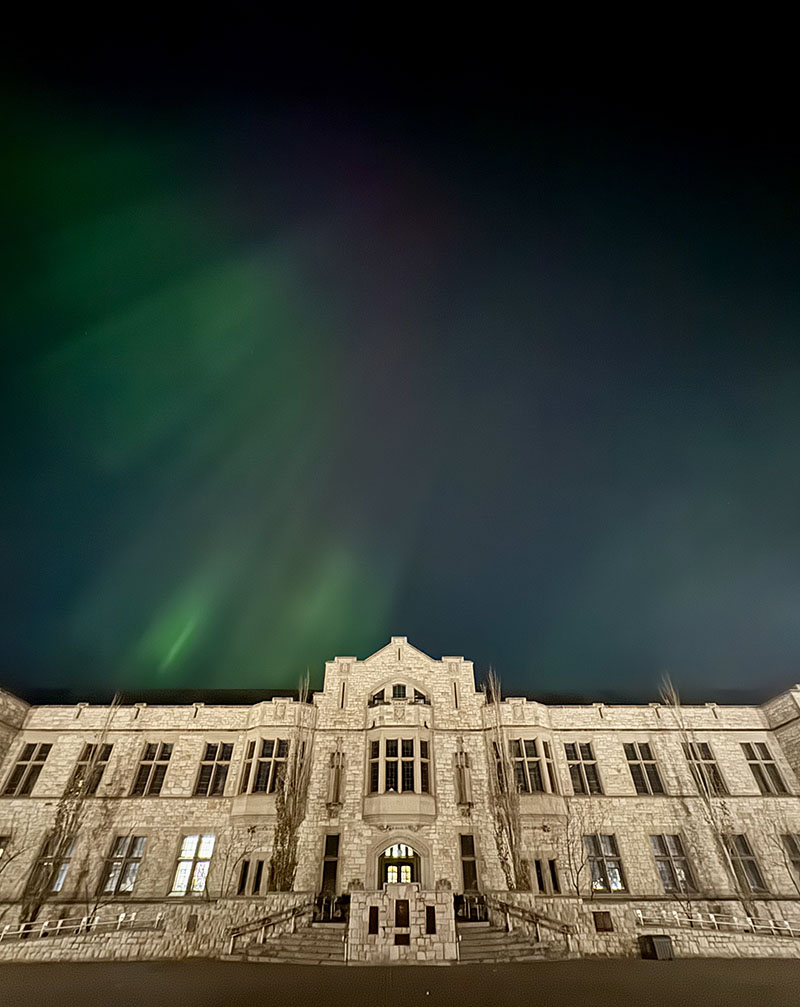
Northern lights explained: What makes the sky dance in colour?
From solar storms to Saskatoon’s lucky latitude, space physicist Dr. Daniel Billett (PhD) explains the science behind the northern lights and why they’re glowing so bright.
By University Communications
Billett is an assistant professor in the Department of Physics and Engineering Physics at the University of Saskatchewan (USask). He studies the behaviour and dynamics of Earth’s ionosphere, home of the aurora.
The following answers have been edited for length and clarity.
What exactly are the northern lights and what causes those curtains of colour to dance across the sky?
The northern (and southern) lights are glowing emissions from particles in Earth’s upper atmosphere, about 100–300 kilometres above the surface. These particles get “excited” (gain energy) when hit by electrons and protons from Earth’s magnetosphere. When something like a coronal mass ejection (CME)—a large, violent burst of plasma from the Sun—strikes Earth’s magnetic field, the electrons and protons rain down into the high-latitude regions of the upper atmosphere where they then excite the air and cause them to glow, producing the aurora.
The aurora comes in greens, purples, blues, and reds. Do those different colours mean something about what’s happening up there?
Different colours relate to what atmospheric particle is producing the emission. Green and red come from oxygen, while purples and blues come from nitrogen. Altitude matters too, with red appearing highest and blue lowest.

How often does Saskatoon get a front-row seat to such a clear display of the northern lights?
Fairly often, compared to most places. Saskatoon sits close to the auroral oval—the zone where auroras usually occur—so we can see them even during moderate activity.
The skies seem extra active this week. Are the lights unusually visible right now? What’s driving the surge in activity?
Auroras are unpredictable. They’re always happening somewhere, but we only see them when they’re strong enough and far enough south. Tuesday night was rare—a G4 geomagnetic storm, triggered by solar eruptions called CMEs. It was so strong that the aurora moved too far south after an hour, making it visible in the southern U.S. instead of here. This happened because we’re near the peak of the Sun’s 11-year cycle, nights are longer, and Saskatoon is usually in a good spot. Activity will slowly decrease over the next few years as the cycle heads toward its minimum, so big storms like this will become less common.
What’s one fascinating or little-known fact about the aurora borealis that might surprise most people?
We can bounce radio waves off the aurora. The SuperDARN group, which I work with, uses radars pointed at the aurora to get measurements of it. We look at how fast it’s moving and what the surrounding particles in the ionosphere are doing. It works kind of like a speed camera, but we’re hitting ionospheric irregularities caused by aurora instead of cars.

